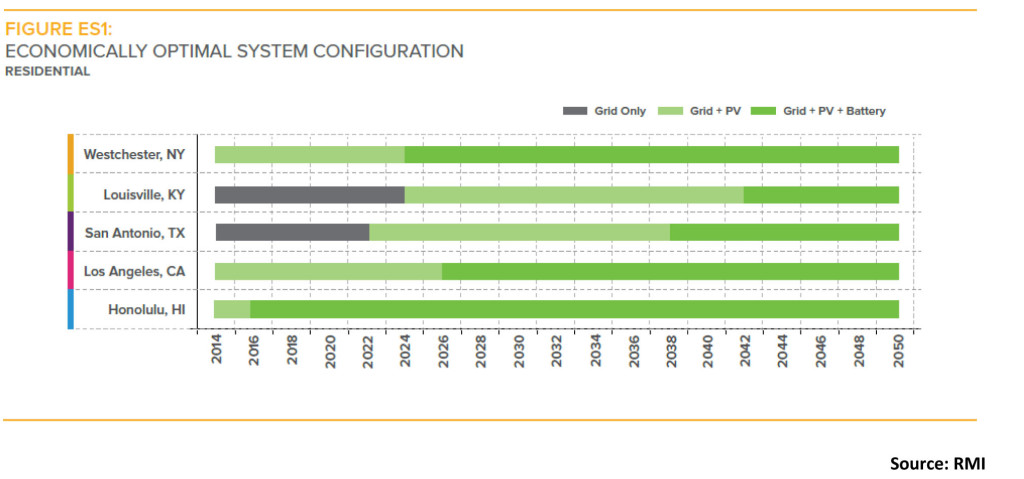It’s not always about dollars and cents.
In a recent article in Utility Dive (the full piece can be found here), Tucson Electric Power’s Carmine Tilghman made a big deal about the unfavorable economics of Tesla’s current 7 kilowatt-hour Powerwall battery option, which he said would cost consumers $7,000 installed. As quoted by Utility Dive, Tilghman said: “At the average all-in electricity rate of $0.12 per kwh, the buyer saves $0.84 per day. And $7,000 divided by $0.84 per day means it will take 8,333 days or about 22.9 years to get the initial investment back for a battery that comes with a ten year warranty.”
Regardless of whether Tesla’s Powerwall actually ends up costing $7,000 installed, utility executives are kidding themselves if they think it is only about dollars and cents. Economics are important, to be sure, but reliability is, as a popular current commercial concludes, priceless.

Just this week I would have paid just about anything to have had Tesla’s battery backup (or anybody else’s for that matter) installed on the wall in my garage. Construction on a new house two down from mine necessitated the installation of a new power transformer on our street. Dominion, my provider, duly showed up, knocked the power off on my block for an hour and hooked up the new equipment. No harm, really, except that since I work out of my home that was 60 minutes of essentially wasted time.
Unfortunately, that was not the only time I wasted day. Later in the evening when I went to turn on the TV (I pay for a bundled internet/phone/TV package through Verizon) nothing happened. The menu info showed up at the bottom telling me that I was watching the Washington Nationals play the first of three games against the Cincinnati Reds—but there was no video, just a blank black screen.
An hour and a half later after the Verizon FIOS tech support guy had had me reboot, disconnect/reconnect, unplug and plug in every cable box in my house (This is standard fare for virtually all customer support these days—when a piece of electronics does not work you are almost always told to turn it off and then back on. For mystical reasons unclear to everyone, that often does the trick.) he finally agreed that I might actually need a real technician to come examine my problem.
Of course, since there seem to be only five of them in Verizon’s entire Washington, DC service territory, the earliest appointment was three days off—so much for watching any of the Nationals/Reds games. And even then, I have no guarantee that the problem, whatever it is, will be fixed.
However, if I had a battery backup installed at my house, none of this would have happened. Dominion would have turned off the power on my block, my battery would have kicked into operation, the power surge that apparently killed my FIOS video feed never would have occurred and I likely would not even have known that the power company was working just two houses away.
Now that truly would have been priceless.
–Dennis Wamsted
 Follow
Follow
